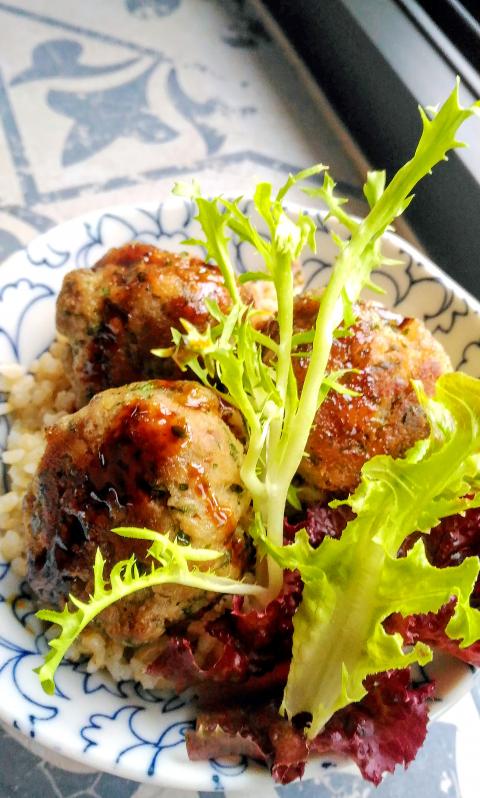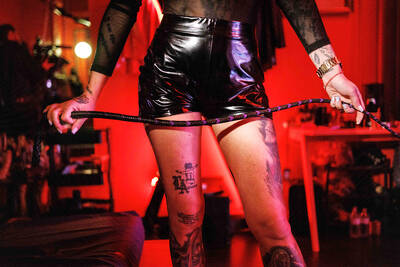“Are you going to Scarborough Fair? Parsley, sage, rosemary, and thyme.” So the words of the English ballad Scarborough Fair go. And these herbs have indeed been a staple of European culinary and pharmacological tradition for many centuries, reputed to have important health-giving benefits. While parsley, rosemary and thyme remain major players, on the culinary scene at least, sage’s reputation has taken a bit of a beating, and it does not appear in recipes with anywhere near the same regularity as its three other companion herbs from Scarborough Fair.
Part of this decline, certainly in regard to English cooking, might be a result of a damning condemnation delivered by Elizabeth David, one of the deities of English cooking, in her book Summer Cooking, first published in 1955.
David suggested that it “deadens the food with its musty, dried blood scent,” adding that it was “altogether too blatant and used far too much.” This may be a reference to that staple of mid-20th-century English cooking, sage and onions, which I recall from my childhood for the stuffing of turkeys. It was an unfortunate introduction and the mustiness remains a persistent scent memory, something akin to winter clothes taken out from mothballs after years of neglect.

Photo: Ian Bartholomew
In this context, the negative reaction to sage is understandable, but it is nevertheless entirely unwarranted. Fresh sage can smell wonderful, but as with parsley and thyme, it does not shine in its dried form. It is fairly simple to grow, and thrives even in a window box if you take care to keep the soil well drained. There is no reason to resort to dried leaves or powder when preparing a dish with sage.
MINT RELATIVE
Sage is a member of the mint family and like mint, it needs to be used with care as its flavor is strong and can be overbearing. It is native to the Mediterranean region but has found its way to many places around the world, a propagation aided by its once almost mythical power as a cure-all. There are records of sage being used in ancient Egypt as a fertility drug, and the Greek physician Dioscorides in the first century AD prescribed it to staunch bleeding wounds, and to clean ulcers and sores. Its use as a remedy for coughs and sore throats also dates back to this time. Sage tea, like mint tea, has long been regarded as a regular daily tonic for healthful living.

Photo: Ian Bartholomew
But sage tea and other such decoctions are just too much of a good thing. Elizabeth David’s comments about sage being “too blatant” are also easily traced back to this pungent and pervasive aroma, but used in moderation, particularly as a base note with rich meats such as pork or goose, it can be really wonderful.
OFFAL ASSOCIATIONS
Sage may have also fallen foul of the mainstream due to its close association with offal, as it was once often used in the preparation of pig’s liver or lamb’s brains. Such dishes have been out of favor for many decades but are gradually coming back due to the efforts of celebrity chefs such as Hugh Fearnley-Whittingstall, Fergus Henderson and the whole philosophy of nose-to-tail eating.
So perhaps sage is set for a big comeback. For those making a tentative step both towards sage and offal, nothing is simpler than dusting pig’s liver in seasoned flour and minced sage and giving it a quick saute in butter. The sage helps balance the richness of the meat and makes for a perfect hot snack served on buttered toast.
As for benefiting your physical and mental health, sage’s qualities border on the miraculous, with herbwisdom.com suggesting that apart from serving as an antiseptic and antibacterial, qualities it shares with many other herbs and vegetables, it also reduces muscle tension, relieves indigestion, calms nervous and excitable dispositions, reduces menopausal symptoms and improves memory.
Not least, sage is a pretty plant, and apart from its most common green variety, also comes in variegated colors. It has nice flowers too that are perfect for garnishing, which can be lightly fried along with the leaves and added to salads or vegetables.
Pork meatballs with mixed herbs
Recipe
(Makes 40)
These meatballs are a great standby. They freeze well and their relatively mild flavor means they can be paired with a wide variety of sauces or vegetables. If getting minced meat from a traditional butcher, make sure to ask that he passes the meat through the mincer twice. If the butcher is using a relatively lean cut such as shoulder, ask that he adds a little bit of fat to the mix. You want a lean meat to fat ratio of about 7:3 to ensure that the meatballs are moist and tender. Breadcrumbs are easily available in supermarkets, but it is really simple to make your own. I freeze the crusts of white bread loaves until I have a sufficient quantity then I bake them in a warm oven, about 120 degrees Celsius, until tanned and dry before popping the crisp shards into a blender. The resulting crumbs can be kept in the freezer for over a month and are perfect for a whole host of applications, from breading fish to bulking up meatballs and thickening sauces. If you are buying good quality bread, why waste the crusts?
Ingredients
1.2kg minced pork (not too lean)
20g fresh sage leaves, minced
2 stems rosemary, minced
30g parsley, minced
4 cloves garlic, minced
1 onion, grated
2 eggs, lightly beaten
200g fine dry breadcrumbs
1 tsp salt
1 tsp pepper
Directions
1. Preheat oven at 200 degrees Celsius.
2. Put all the ingredients into a large bowl and mix thoroughly with your hands. Do not use a wooden spoon, a spatula or, heaven forbid, some mechanical mixing machine. Your hands are ideal for this operation, so use palm and fingers to get an even mix.
3. Put the meat mix in the fridge to settle for at least an hour or overnight. This helps to let the flavors meld together.
4. Prepare a baking tray by rubbing a thin coating of neutral oil on it.
5. With wet hands, roll the meat mixture into balls about the size of golf balls and place them on the baking tray.
6. Bake in the oven for 15 to 20 minutes. Can be eaten immediately or allow to cool and freeze.
7. They reheat very nicely in a thick marinara sauce or just pop them in the microwave if you have a meat craving. These also work well with a cheesy Mornay or rich meat gravy.
Ian Bartholomew runs Ian’s Table, a small guesthouse in Hualien. He has lived in Taiwan for many years writing about the food scene and has decided that until you look at farming, you know nothing about the food you eat. He can be contacted at Hualien202@gmail.com.

As we live longer, our risk of cognitive impairment is increasing. How can we delay the onset of symptoms? Do we have to give up every indulgence or can small changes make a difference? We asked neurologists for tips on how to keep our brains healthy for life. TAKE CARE OF YOUR HEALTH “All of the sensible things that apply to bodily health apply to brain health,” says Suzanne O’Sullivan, a consultant in neurology at the National Hospital for Neurology and Neurosurgery in London, and the author of The Age of Diagnosis. “When you’re 20, you can get away with absolute

When the South Vietnamese capital of Saigon fell to the North Vietnamese forces 50 years ago this week, it prompted a mass exodus of some 2 million people — hundreds of thousands fleeing perilously on small boats across open water to escape the communist regime. Many ultimately settled in Southern California’s Orange County in an area now known as “Little Saigon,” not far from Marine Corps Base Camp Pendleton, where the first refugees were airlifted upon reaching the US. The diaspora now also has significant populations in Virginia, Texas and Washington state, as well as in countries including France and Australia.

On April 17, Chinese Nationalist Party (KMT) Chairman Eric Chu (朱立倫) launched a bold campaign to revive and revitalize the KMT base by calling for an impromptu rally at the Taipei prosecutor’s offices to protest recent arrests of KMT recall campaigners over allegations of forgery and fraud involving signatures of dead voters. The protest had no time to apply for permits and was illegal, but that played into the sense of opposition grievance at alleged weaponization of the judiciary by the Democratic Progressive Party (DPP) to “annihilate” the opposition parties. Blamed for faltering recall campaigns and faced with a KMT chair

A police station in the historic sailors’ quarter of the Belgian port of Antwerp is surrounded by sex workers’ neon-lit red-light windows. The station in the Villa Tinto complex is a symbol of the push to make sex work safer in Belgium, which boasts some of Europe’s most liberal laws — although there are still widespread abuses and exploitation. Since December, Belgium’s sex workers can access legal protections and labor rights, such as paid leave, like any other profession. They welcome the changes. “I’m not a victim, I chose to work here and I like what I’m doing,” said Kiana, 32, as she